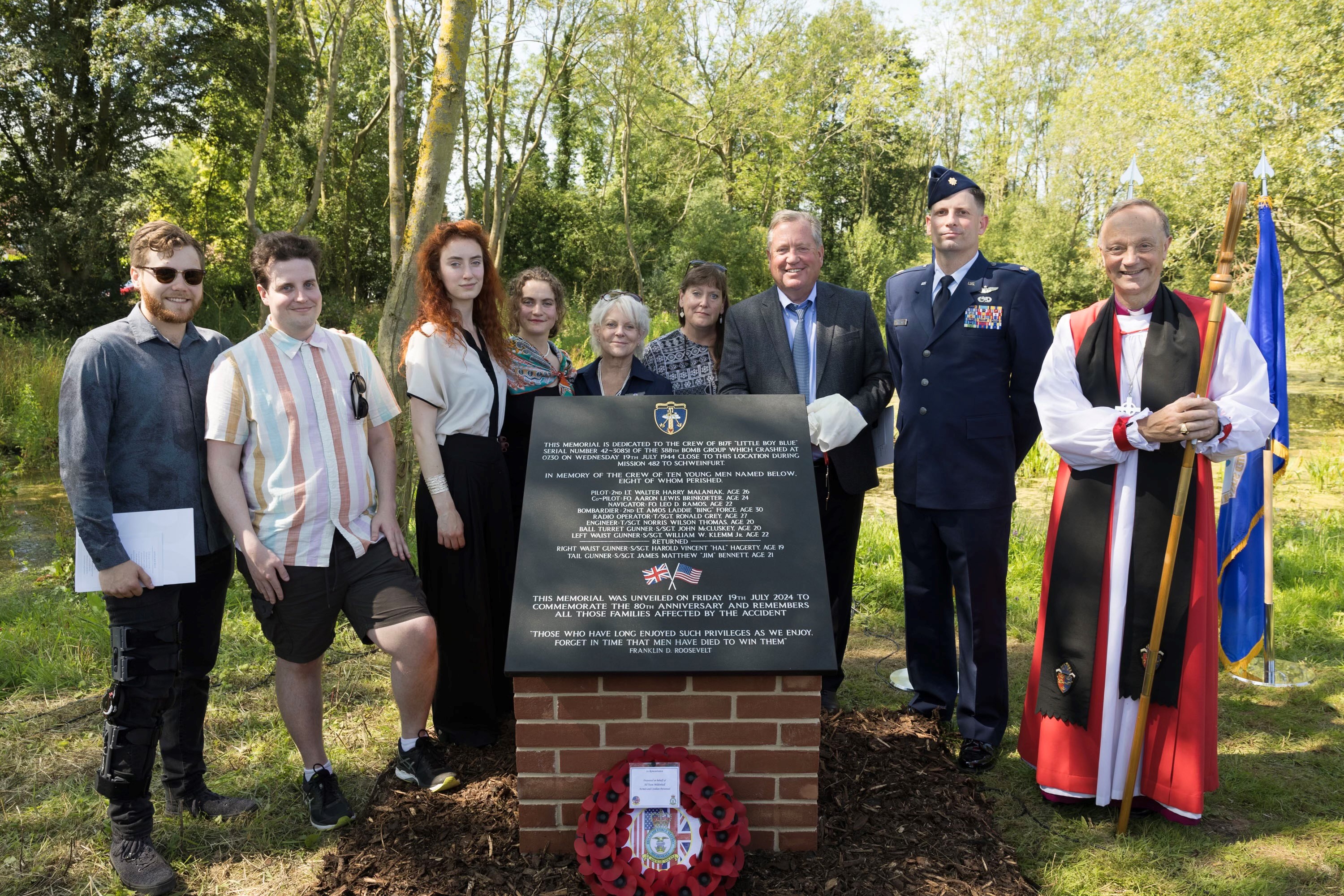
The 80th anniversary of an American bomber crash in Suffolk has been marked with new evidence about the death of the crew.
The American WWII B-17 bomber named Little Boy Blue crashed just outside Thurston after a midair collision, leaving eight dead with two survivors.
The tragedy occurred on 19 July 1944 and now a poignant memorial service has been held to commemorate the crash on land owned by Steve Honeywood. Guests were told that a painstaking search undertaken by volunteers led by Cotswold Archaeology had uncovered new evidence about the remains of three young airmen who were still aboard the bomber when it crashed.
The young Americans were unaccounted for, denying their families closure and the opportunity for formal funerals.
But now the excavations by 40 people, including UK military veterans, serving US military personnel and Suffolk Archaeology Field Group, have found one tiny but significant piece of evidence.
Rosanna Price, Cotswold Archaeology’s Engagement Manager supervised the volunteers, and she said: ‘‘Employing systematic geophysical surveys, fieldwalking, test-pitting, and metal detecting, we meticulously mapped the debris field to locate identifiable aircraft wreckage and any potential remains of the missing crewmen. Despite the crash site's agricultural history, our efforts uncovered significant aircraft material spread across a vast area. Our dedicated team were rewarded when Clive Smither, a local metal detectorist, was able to recover the dog tag of one of the crew – co-pilot Aaron Brinkoeter. Movingly, the discovery was made on the morning of young Aaron’s birthday – 12th September. He was 24 at the time of the crash.’’
Leading the memorial service on July 19 was the Bishop of Dunwich, the Rt Rev Dr Mike Harrison, and he said afterwards: ‘‘We are indebted to the generous time given by so many people to ensure that, not only does the legacy live on of this tragic incident, but that new evidence has been uncovered that gives some closure for families involved. Painstaking work has been undertaken to shed more light on those tragic events 80 years ago and no doubt this has resonated in making what happened all those years ago seem just as relevant today. This has been an unforgettable coming together of a wide range of people dedicated to keeping alive what happened here in Suffolk in July 1944.’’
Rosanna added: ‘‘This project has been an extraordinary and moving experience for all involved – although archaeologists are experienced with recovering human remains, we very rarely do so for individuals with surviving relatives, and with known identities and names. Working with active-duty and retired military personnel, and hearing their reflections on service, also provided a poignant reminder of both the historical significance of our work, and the relevance to contemporary life.’’
She added: ‘‘To say we are proud to use our professional expertise to shed light on the bravery of these young men and the freedoms they fought for, and to keep them fresh in the public’s mind at a time with considerable global unrest, would be an understatement.’’
Little Boy Blue was on a bombing route to Schweinfurt, Germany, in 1944. The other two airmen who were never found were 26-year-old pilot Walter Malaniak of Pennsylvania and 27-year-old radio operator Ronald Grey of New York.
They, along with Aaron, are commemorated on the Wall of the Missing at Cambridge American Cemetery, Madingley. The service not only honoured the 10 who died, but it also fulfilled the wishes of the family of Mr Grey. The radio operator was an Anglican Episcopalian and his mother and sister had always wanted a service at his final known location.
The project was commissioned by the US Department of Defense’s DPAA department.
The excavations, in September last year, attracted considerable local interest. Historians and enthusiasts provided invaluable insights. They helped to identify plane parts and brought photographs and oral history.